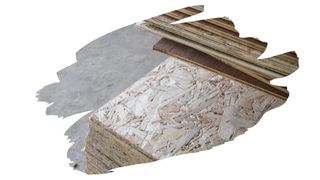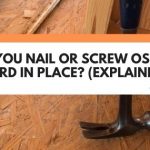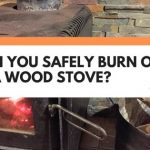OSB is probably one of the strongest manufactured woods you can get your hands on.
It’s shear strength beats out even plywood. And, when it comes to water-resistance, it does a much better job at it than MDF.
Nevertheless, OSB is not a natural material, and the glues used to make it are fairly toxic. But, are they too toxic to be anywhere near your vegetable garden bed?
Well, in this post, you’ll find out what chemicals really go into the manufacture of a sheet of OSB. You will also learn whether or not OSB is really your best choice for an outdoor structure.
Also, keep reading to discover the safest type of material you can use for a raised garden bed.

This post may contain affiliate links to products that we receive a commission for (at no additional cost to you). Learn more here.
What’s The Safest Type Of Material For A Raised Garden Bed?
Ideally, garden beds need to be made from durable materials that won’t leach harmful chemicals or toxins into surrounding soil.
This is why untreated White Oak and Cedar wood, are two of the best materials you can make a garden bed with.
What’s more, these two particular wood species are also some of the more rot-resistant wood types around. So, even when left untreated, they can handle all-weather conditions for years.
Related Post: Can You Really Use Untreated Oak For Raised Beds?
And What Is Untreated Wood Exactly?
Untreated wood is wood that has not been infused with wood preservatives. On the other hand, treated wood has been saturated with chemical wood preservatives.
Now, while those wood preservatives help to stave off wood rot, they are also very toxic. In fact some wood preservatives — such as Chromated copper arsenate (CCA) — can even contain traces of arsenic.
That is why it’s important you only use untreated wood for a garden bed. If you use treated wood, then you run the risk of some of those chemical preservatives leaching into the soil.
What About OSB? Can You Use OSB Outside In The Garden?
Well, OSB, (also referred to as Oriented Standard Board), is not a good choice for any exterior construction.
This manufactured wood is far from waterproof. And, while it is more water-resistant than MDF, it’ll still absorb moisture readily.
And once it absorbs water, it takes an incredibly long time for OSB to dry out afterwards. So, it’s highly susceptible to wood rot, if it is used outside.
Even the more expensive water-resistant OSB grades, such as OSB/4, aren’t suitable for direct ground contact.
Related Post: Can OSB Board Really Get Wet? (7 Things You Need To Know)
In other words, if you used OSB for a raised garden bed, it will rot away fairly quickly.
And How Long Does It Take For OSB To Rot Away?
If that OSB doesn’t manage to dry out — due to rainwater and humidity — it will rot within a few months.
But, let’s say for the sake of argument, that OSB somehow managed to remain unaffected by all of the moisture outside. If this were the case, there’s still another problem in using this material for a garden bed.
And that problem is infused right down into the very fibers of this material from the moment it’s made.
And What Is OSB Made Of Exactly?
Well, OSB is a composite material made from lots of thin strands of wood. And those wood strands are all bonded together using a lot of glue.
Now, it’s what’s in that glue that’s the issue.
You see, when it comes to OSB, the adhesives used to make this material contain formaldehyde resins; either Melamine-Urea-Formaldehyde (MUF) or Phenol Formaldehyde (PF).
And the formaldehyde ingredient in these glues is some pretty toxic stuff. If ingested, it’s poisonous. If its inhaled, it can be lung-burning. And if enough liquid formaldehyde gets onto someone’s skin, it can burn them.
Related Post: Do You Nail Or Screw OSB Board In Place? (Explained)
But Why Is This A Problem When It Comes To Using OSB For A Garden Bed?
Well, those OSB glue chemicals can leach into soil — especially in relentlessly humid conditions. So, you should not use OSB for your garden bed.
Regardless, OSB wouldn’t last long outside anyway — even if you were to use the most water-resistant graded OSB material.
To Wrap Up, Here Are The 3 Key Takeaways From This Post…
- 1). OSB is a manufactured wood made up of a composite of thin wood strands and formaldehyde-based glues.
- 2). OSB will rot away quickly if it has direct permanent contact with ground soil.
- 3). The chemicals used in OSB’s formaldehyde-based glues, can also leach into soil.
References:
Simple and accurate temperature correction for moisture pin calibrations in oriented strand board (fs.fed.us)
Chromated copper arsenate–treated wood: A potential source of arsenic exposure and toxicity in dermatology | National Center for Biotechnology Information



